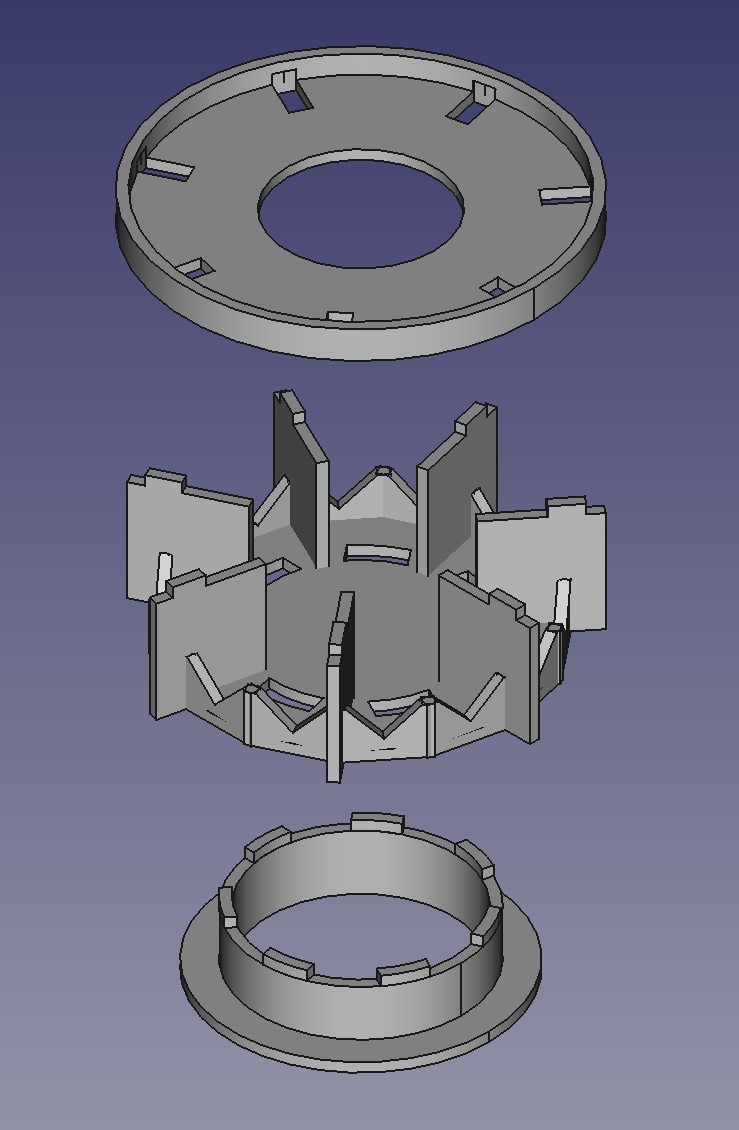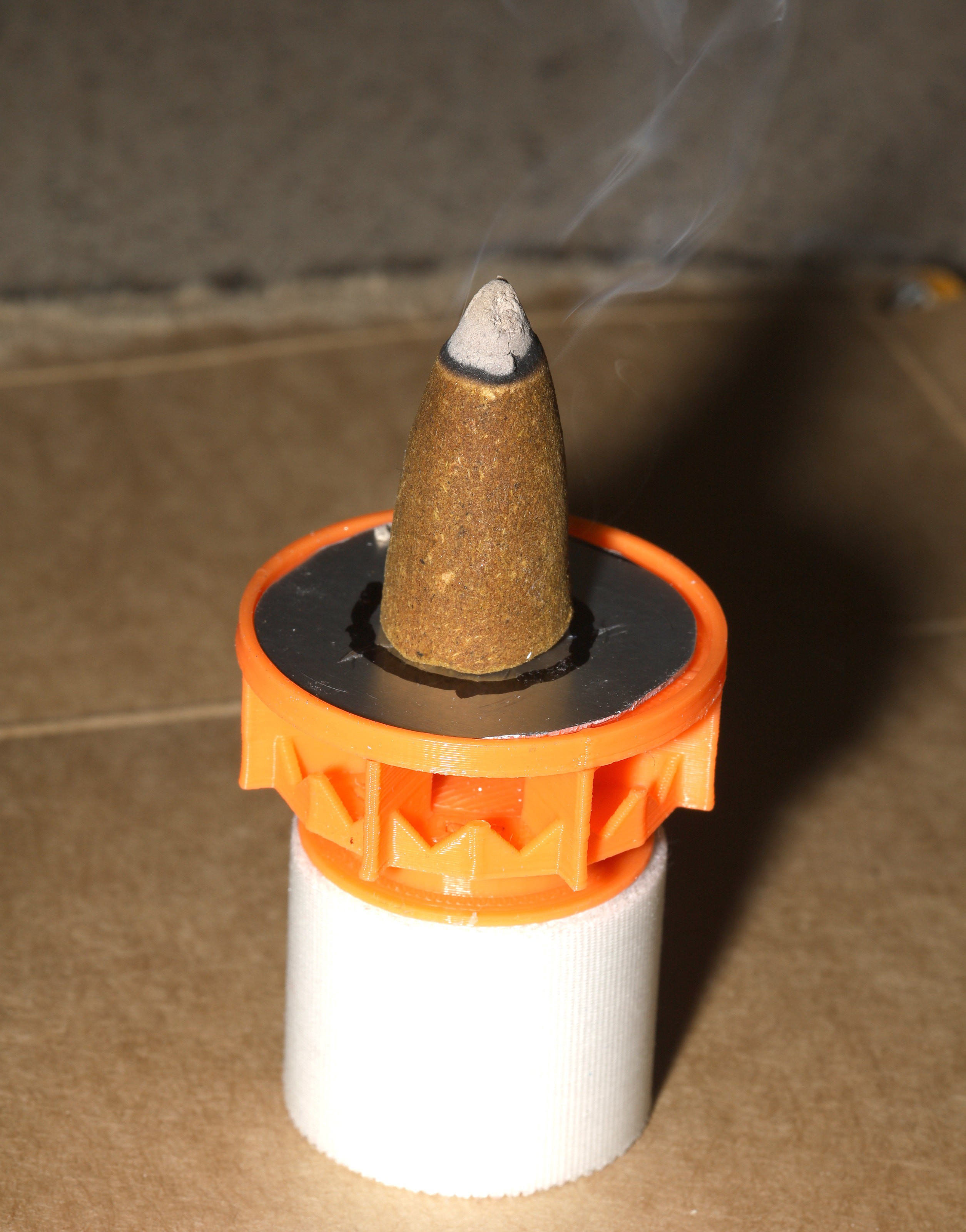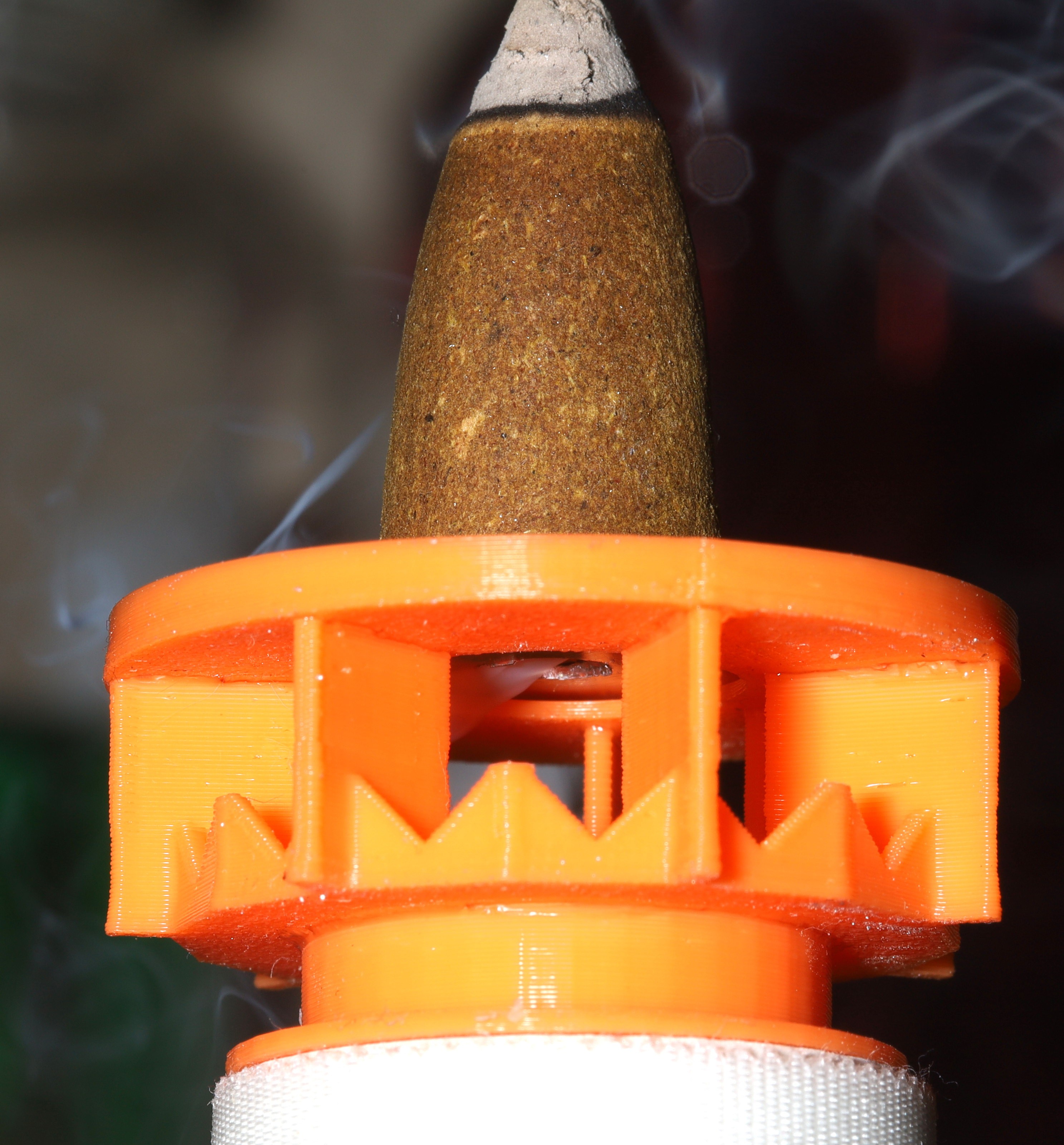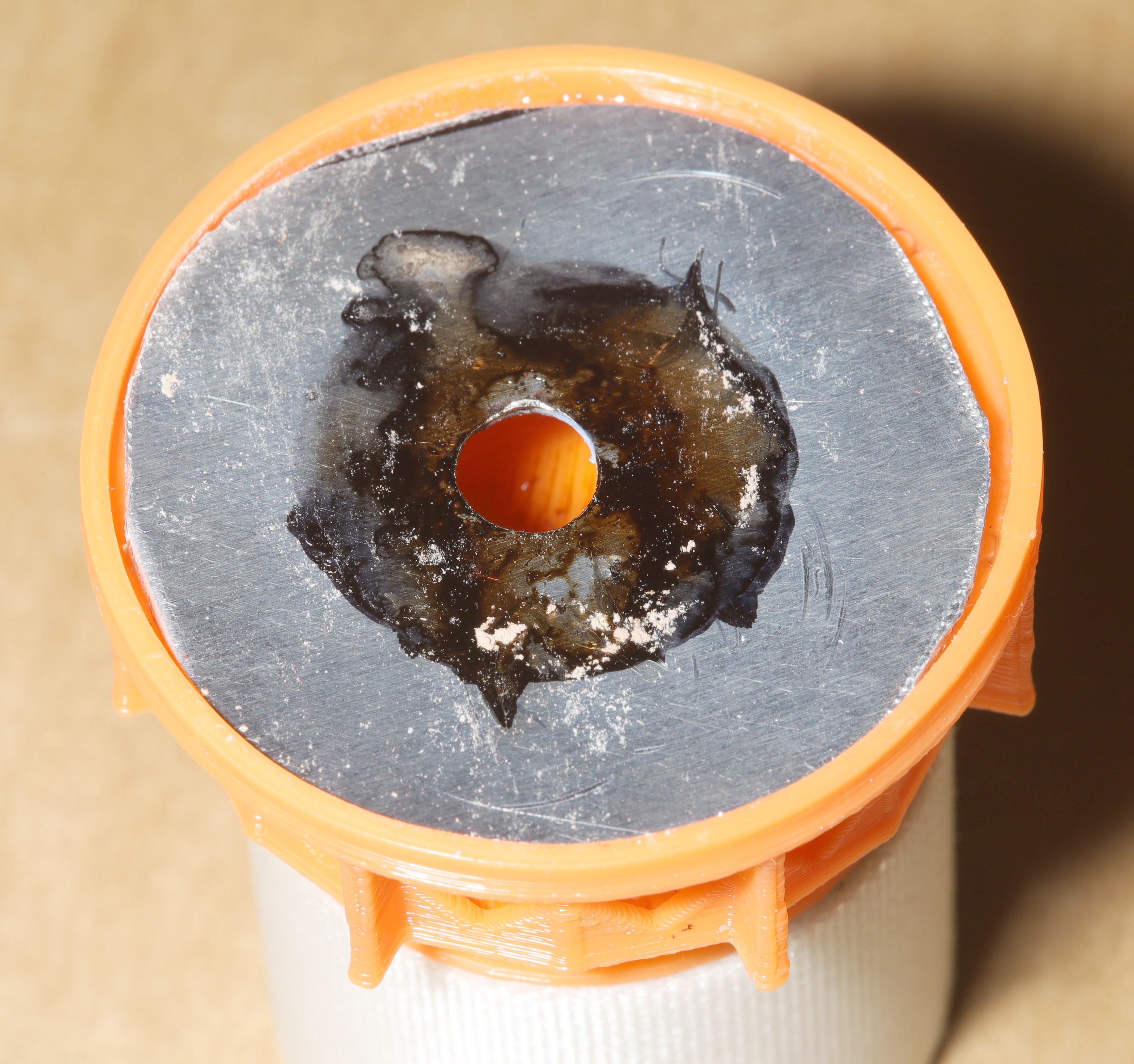
The great task is spreading the smoke into a cylinder of engine streams. Most incense burners only create a narrow stream & pool it. To kick things off, there was a test platform to try to spread it out. It had a metal disc as a heat shield. It tried to pool it & release it around the edges. It had a 36mm diameter dictated by the heat shield.

Most of the smoke actually comes out of the top.

It has to burn partway to start going down.

As expected, it doesn't fall straight down like engine exhaust. It gets taken away by the wind & follows the lowest side. It doesn't fall evenly in a cylinder.

It peaked for only a few minutes, flowing manely downwind. It successfully created a pool but only exited on the downwind side.

Most of it outgasses from the top.

The ink marking was gone.

It left an oily residue.

The oil got on the table.
So the long term win is using a metal screen with nothing under it as a heat shield. Tests should continue using the metal disc, since a metal screen is $10. A metal screen could allow a smaller diameter since it's not acting like a heat break. The test setup could use a funnel to reduce the disc to a simulated grid diameter.
It needs to be enclosed in a glass enclosure, but it's not economical when a square foot is $2000. A foldable plastic enclosure might work. It needs air inlets on the bottom.
It should focus on just spreading out the smoke instead of pooling it. It could try passing it through several layers of grids. Then the spreaded smoke could be concentrated into a cylinder. Having a smaller diameter would help with the illusion. It should be only the diameter of a cone or 20mm.
It has to be perfectly level. The smoke spreading idea might overcome this.
The time when it flows down is so short, it might be more effective as an art piece for a nano mister & it was used for humidifying.
 lion mclionhead
lion mclionhead
Discussions
Become a Hackaday.io Member
Create an account to leave a comment. Already have an account? Log In.